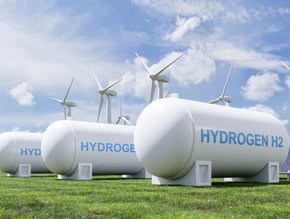Offshore energy increases the global electricity capacity

What happens when you run out of land to use. Historically, the solution has been to cut down trees and install infrastructure in their place. Energy firms have come up with waves to not only use space better, but also leverage the optimal environments for renewable energy generation.
Wind, solar, and hydroelectric power all make the most of the ocean environment for its surface area and varied weather conditions. By sending wind turbines offshore, energy firms are able to capture energy from unpredictable winds, tidal power makes the most of the waves as a direct result of that wind, and solar power can also be spread across large areas to produce more energy from clearer skies.
Offshore wind power is set to increase drastically over the next 7 years as the EU recognises the demand for a much larger renewable energy capacity. By 2030, it hopes to multiply its offshore wind capacity by 25 from its 2021 baseline of 14.5 gigawatts.
As explained by McKinsey & Company, the world is embracing offshore as a suitable canvas for more sustainable power. In the Asia-Pacific (APAC) region, offshore wind is likely to exceed that of Europe, the Middle East, and Africa (EMEA) by the mid-2030s. Installations in APAC are set to reach 410 gigawatts by 2050—with 240 GW of that in Mainland China.
Across the Americas, capacity was set to increase by 35 GW by 2050, but President Joe Biden called for a 30 GW capacity increase by 2030. Countries will also benefit from increased power capabilities as 15 megawatt turbines are set to be introduced.
McKinsey analyses the challenges of offshore wind expansion
McKinsey data also shows a number of countries increasing their pursuit of offshore wind energy, but challenges abound the sector as it grows. With the likes of oil and major utilities companies entering the space, the competition in the renewables sector is set to increase, let alone in the offshore wind segment.

As more companies compete for offshore wind projects, governments across the globe are making the rules stricter for businesses that want to acquire a piece of this segment. Some governments use a bidding process to determine either the price at which companies will sell electricity for a long time or the price they have to pay to use the seabed for the wind projects.
In some areas, these rules influenced the rise of prices for seabed leases. For example, along the US Atlantic coast, the prices increased more than ten times from 2017 to 2018. Companies are also trying to become more competitive by offering lower prices for the electricity they will produce from the wind projects.






